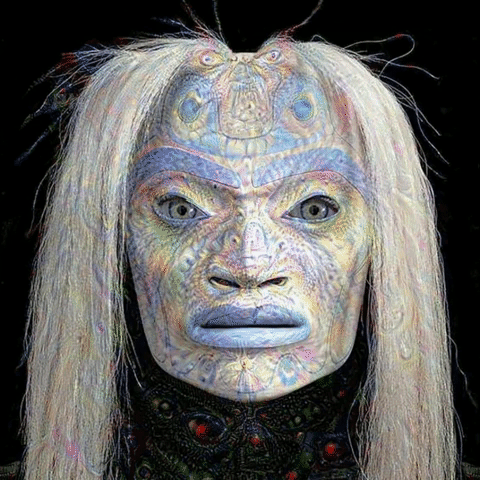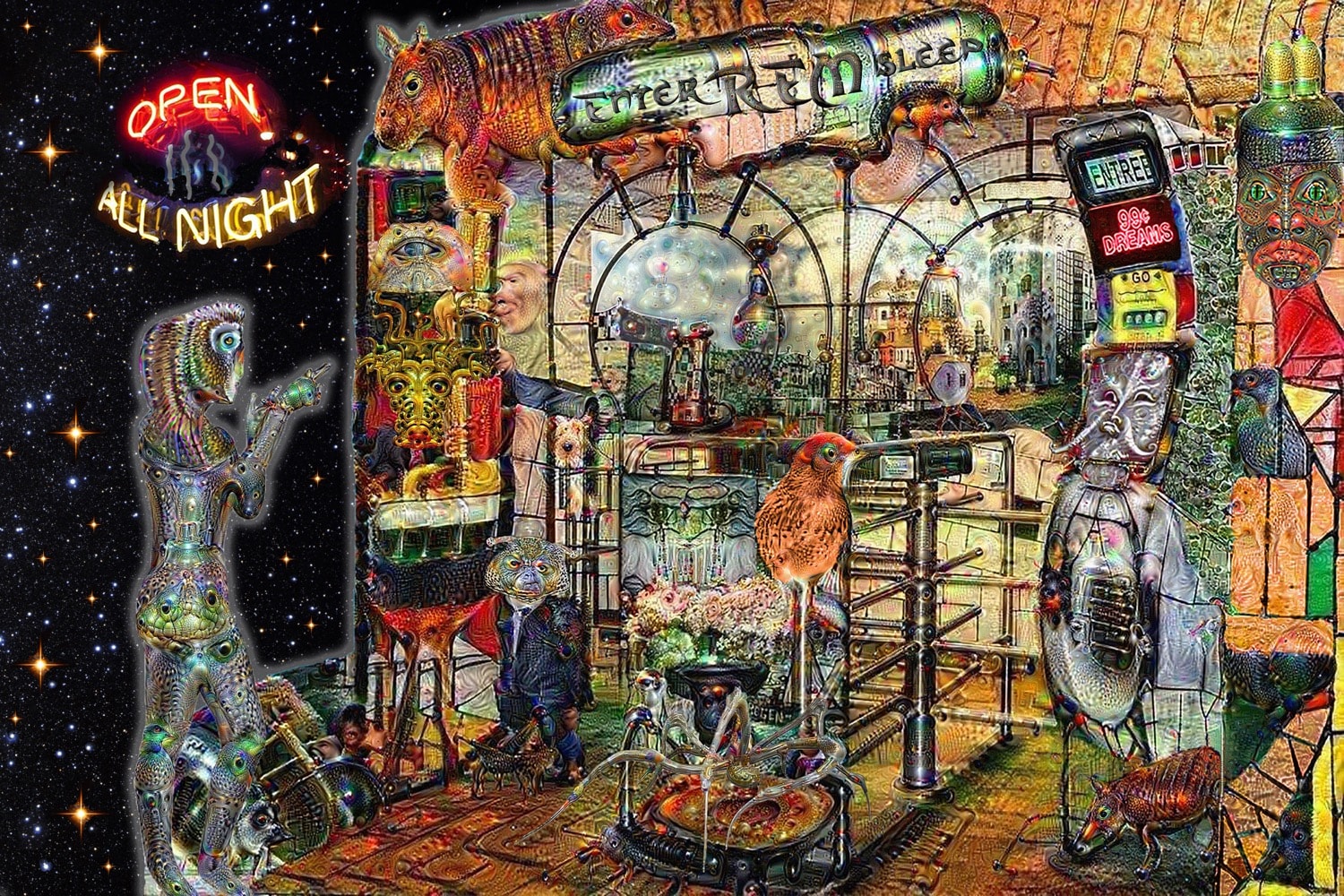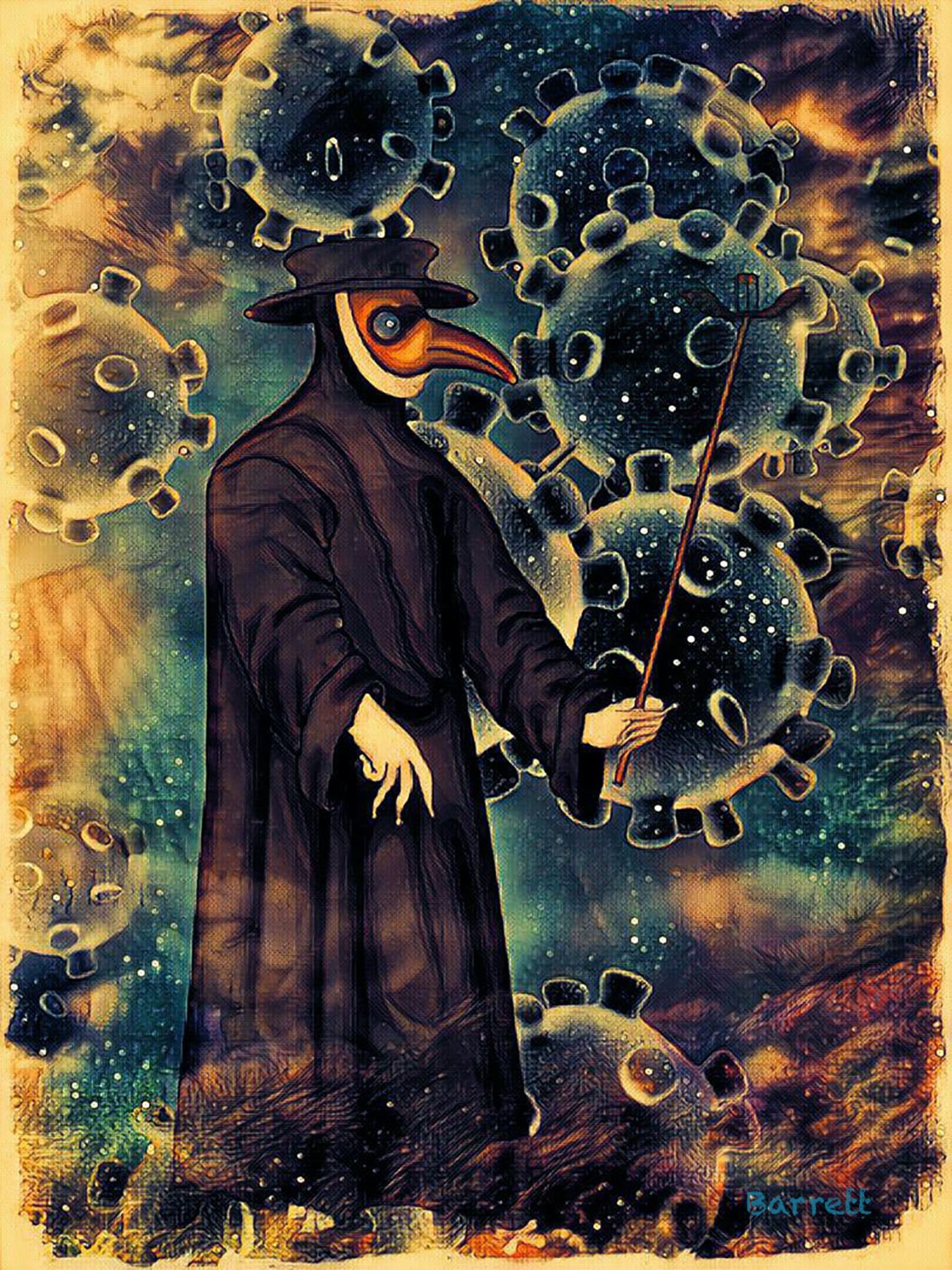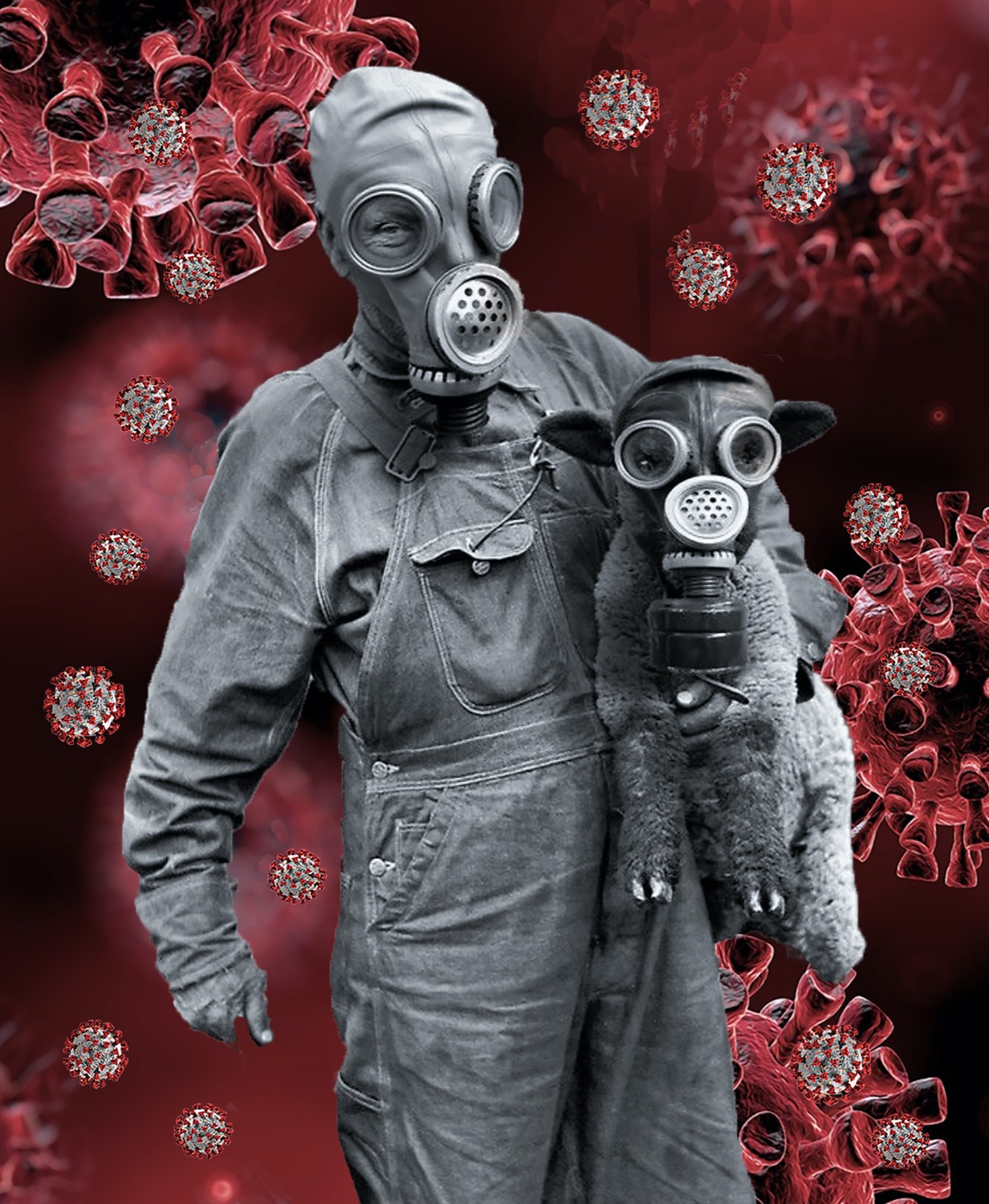Why COVID Dreams Are Weirder Than Normal
17:03 minutes

Standing in a crowded room and realizing nobody is wearing a mask. A family dog that has passed away protectively guarding grandkids. Having a pleasant get-together with someone you haven’t thought of in years, then suddenly realizing everyone is a little too close, and a little too sick.
Do any of these instances sound familiar? A few weeks ago, we asked Science Friday listeners if their dreams have changed since the start of the COVID-19 pandemic. We heard from many listeners who said yes, their dreams have become more vivid, with elements of the pandemic included.
Transcript: This is Tyler in Atlanta, Georgia. Since the pandemic began, I have been dreaming a lot more, and been dreaming about people and places I haven’t thought about in years. Like, not since childhood. But the biggest change is starting in April, my dreams started having sound in them. And previous to this, I never had any sound in any of my dreams. Like, I’m not talking to people in them or anything, but I do have people talking to me and hear other sounds in the dreams now. And as the pandemics going on, my dreams have started getting back to what they used to be. But it’s still not quite normal.
I have had a number of dreams where I am in a social setting or someone’s home or something like that, and suddenly realize that no one is wearing masks, and they’re not maintaining social distance. And I wake up feeling very anxious and unsettled after that.
I have recently started having nightmares, where I’m in a crowded room. And I am usually at a school gathering or some kind of convention where there’s lots of vendors, and there’s hundreds of people. And at first, I’m totally unbeknownst that I’m in a pandemic, and that everything’s fine. And then a few minutes into the dream where I’m in this crowded room, I notice that every single person is not wearing a mask and I begin to panic. And it’s just as terrifying as the nightmares in college where I thought I had signed up for a college course. And I forgot I signed up for it, and I showed up for the day of the exam. So, it is very panic stricken and kind of funny at the same time.

A change in dreams due to a crisis is very common, says Deirdre Barrett, a dream researcher and assistant professor of psychology at Harvard University in Cambridge, Massachusetts. When we’re in a dream state, the brain is processing the same things we think about during the day. But when we’re asleep, the parts of our brain that handle logic and speech are damped down. The parts that handle visuals, however, are ramped up.
Barrett has been collecting dreams from people all over the world since the start of the pandemic. She says common dream themes range from actually getting the virus, natural disasters and bug attacks. Healthcare workers have regularly reported the highest level of stressful COVID-19 dreams, according to her data.
“The typical dream from the healthcare workers is really a full-on nightmare,” Barrett says. “Just as bad as you’d see in war zones.”
Barrett joins SciFri producer Kathleen Davis to talk about her research into crisis dreams, and what people can do if they want to experience stressful dreams less often.


Have you had a memorable or disturbing dream during the pandemic? Recount your experience in Barrett’s online survey for her research. She’s received more than a thousand responses to date.
Invest in quality science journalism by making a donation to Science Friday.
Deirdre Barrett is an assistant professor of Psychology in the Department of Psychiatry at Harvard Medical School in Cambridge, Massachusetts.
IRA FLATOW: This is Science Friday. I’m Ira Flatow.
Have your dreams gotten stranger since the start of the COVID-19 pandemic? Some people’s dreams have become nightmares or downright weird. Sci Fri producer Kathleen Davis is one of those people.
She’s been seeing what you listeners have to say and has been talking with dream experts. And she’s here to tell us what she’s found. Hi, Kathleen.
KATHLEEN DAVIS: Hey, there.
IRA FLATOW: So you’ve been having weird dreams?
KATHLEEN DAVIS: Yeah, I have. I feel like my dreams are a lot more vivid than they used to be. And I’m dreaming about things that seem both really weird, and at the same time, I’m thinking they’re probably tied a little bit to the pandemic.
IRA FLATOW: All right. Give me an idea. Like what?
KATHLEEN DAVIS: Well, I had one a few weeks ago where I was kind of in this Mad Max scenario. And I was in this group of survivalists, and the leader of my group was this girl who I went to middle school with, who I really don’t think I’ve thought about in over a decade. So that was very weird.
IRA FLATOW: Wow, that is very strange.
KATHLEEN DAVIS: And I’ve heard from a lot of friends and family who are also experiencing similar things. So a few weeks ago we put out this call on the Science Friday VoxPop app, and here’s what some of our listeners told us about their dreams.
ROB: I have had a number of dreams where I am in a social setting or someone’s home, or something like that, and suddenly realize that no one is wearing masks and they’re not maintaining social distance. I wake up feeling very anxious and unsettled after that.
JENNIFER: I have recently started having nightmares where I’m in a crowded room, and I am usually at a school gathering or some kind of convention where there’s hundreds of people. And at first, I’m totally unbeknownst that I’m in a pandemic. And then a few minutes into the dream where I am in this crowded room, I notice that every single person is not wearing a mask, and I begin to panic.
TYLER: Since the pandemic began, I have been dreaming a lot more and been dreaming about people and places I haven’t thought about in years. Like not since childhood. But the biggest change is, starting in April, my dreams started having sound in them. And previous to this I never had any sound in any of my dreams.
KATHLEEN DAVIS: Those were listeners Rob from Fairfax, Jennifer from Anchorage, and Tyler from Atlanta. Thank you to everybody who left us messages, we wish we could play all of your calls.
IRA FLATOW: We sure do. Now, OK, tell us what the experts have to say about this.
KATHLEEN DAVIS: Yeah, so I spoke to Dr. Deirdre Barrett who is a psychologist and a dream researcher at Harvard University in Cambridge. She’s also the author of the new book Pandemic Dreams that is all about this topic. So I started by asking her why it seems like so many of us are having strange dreams right now.
DR. DEIRDRE BARRETT: Well, any crisis tends to stir up our dream life. That’s been ongoing since the start of the pandemic. But most crises make us lose sleep, if anything. And especially at the start of the pandemic, when so many people were furloughed or sent home from school, people were actually catching up on sleep somewhat.
So at the very start of the pandemic I heard lots of people saying that they just had lots more dream recall than usual. And more bizarre dreams and more vivid dreams. Dream life just blipped way up at the very start.
And I think it has dropped back down, as people are caught up on sleep and some people are doing their commutes again, to something that’s above our average. But not like before the pandemic.
KATHLEEN DAVIS: Mm-hmm. What is happening in the brain that processes what’s going on in the world and then turns that into a dream?
DR. DEIRDRE BARRETT: I look at dreams are basically just thinking in a different brain state. Different electrical activity, different biochemicals. But we’re still concerned with all of our usual fears, hopes, dreams, work stuff, personal stuff. But our brain is in a state where our visual areas are much more active even we we’re awake.
Our emotional areas are a little more active. And areas that are associated with logical linear reasoning are damped down a lot. So we’re thinking in this very imagery laden emotional state with less verbal thoughts, but we’re still focused on the same things that we are by day.
KATHLEEN DAVIS: This may be an old wives tale, but I’ve heard that dreams are, in part, a way for the body to get rid of some extra worries or extra anxieties. Is there any truth to that?
DR. DEIRDRE BARRETT: I wish that were true. There was this theory that Francis Crick came up when he’d done no work on dreams. But because of his DNA work it got a lot of attention, which other people called the garbage disposal theory of dreams. That we were getting rid of things we didn’t need to remember.
And there’s no evidence that stuff that comes out in dreams is more forgotten. And if anything, people with a lot of anxiety say that having anxious dreams about the same thing tends to be a feedback loop, where having anxious dreams by night makes them more anxious by day, which makes them have more anxious dreams. So no, we’re not getting rid of anything. If anything we’re laying down and solidifying memories.
KATHLEEN DAVIS: Walk me through what kind of patterns you’re seeing in people’s dreams during this pandemic. What are common themes?
DR. DEIRDRE BARRETT: Well, there’s been some change over time. And near the start of it I saw the most common dreams were focusing on coming down with the virus. I’m having trouble breathing, I’m spiking a fever, I must have the virus. Then there were clusters of metaphors. And some of them were where natural disasters stand in for whatever has really just happened.
A tsunami’s coming at the dreamer, earthquake, tornado. So lots of the standard crisis metaphors. But then also, I saw lots and lots of bug attack dreams, which seem unique to this. I think it’s partly the pun that we say, “I’m coming down with a bug.”
After a number of weeks of lockdown, I was seeing more dreams about the secondary effects of the pandemic. People who were sheltering at home alone were dreaming about being thrown in prison. And people who were sheltering with family or roommates tended to have these metaphors for crowding or lack of privacy. The whole neighborhood has moved into my house and set up cots so I can’t even walk through my room.
So a lot of those secondary effects were becoming more of the dream anxiety. And then as things reopened there were bad back-to-work dreams, it’s the first day of work and there are all these weird ill people coughing instead of my usual co-workers. But the anxiety has focused from simply the virus to effects of the lockdown, back to kind of the virus, but the details of how social distancing or forgetting your mask may be what exposes you to it.
KATHLEEN DAVIS: Mm-hmm. And just to be clear, people are self reporting these dreams to you, is that right?
DR. DEIRDRE BARRETT: Yes, I have a survey going and it asks for any dreams that you have had about the COVID-19 pandemic. So I’m not saying the bug attacks are metaphors for the pandemic by definition. If the person has put that dream into the survey they think it has something to do with the pandemic.
KATHLEEN DAVIS: And as you mentioned a little bit earlier, you’ve studied people’s dreams after other traumatic events, including after 9/11. How do the dreams that you are seeing now compare to dreams that you’ve seen after other crises?
DR. DEIRDRE BARRETT: I think the biggest difference is that huge cluster of bug attack dreams that I mentioned. And there’s a smaller cluster of invisible monsters that are going to grab the dreamer that I’ve never seen. Also, there are fewer bad people doing this. There’s more stuff that is the bugs, or monsters, or bad animals, or natural disasters.
It’s a little bit more focused on dangers of the natural world. Also, I’ve never noticed a gender difference in reactions, and I did some statistical analysis separately for men versus women. And men were as high on anxiety, but women had elevated rates of anger in their dreams, and sadness in their dreams, compared to samples from normative times. And also, they were dreaming just more unpleasant body sensations, stuff that didn’t have to do with illness.
And I think it’s just because women actually are getting impacted by this more. They’re doing the majority of the nursing of family members who get sick, the majority of the home schooling. Women are very disproportionately represented in people who’ve been laid off since the pandemic started.
They tend to be in the less protected– the part time jobs with no contracts that can lay you off overnight. So women are having probably a worse time with the secondary effects and a broader range of negative emotions.
KATHLEEN DAVIS: That’s fascinating. Are you able to break down your data in terms of profession? I am curious if you’re seeing any difference between the dreams of health care workers versus the general population.
DR. DEIRDRE BARRETT: Yes. One of the questions in my survey is whether you’re a health care worker. I first opened the survey on March 23. The American health care workers didn’t look very different than other people. They were just sort of anxious, oh my God, it’s coming for us.
But the Italian health care workers were already having these horrible traumatic nightmares about trying to get a tube down someone’s throat whose breathing was so constricted they couldn’t get the tube placed. Or they had them hooked up to a ventilator and it was coming loose. But basically, they had a patient who was dying and they were trying desperately to save their life, and they were failing.
And then as the pandemic really started hitting parts of the US, I started seeing those trauma dreams. And trauma dreams are just really different from other anxiety dreams or nightmares. They tend to be more realistically something that’s happened by day with just a bit of dreamlike distortion. The typical dream from the average person is an anxiety dream, but not a totally out-of-control nightmare. And the typical dream from the health care workers is really a full on nightmare, just as bad as you’d see in war zones.
KATHLEEN DAVIS: Oh my gosh. So this year has been such a conflation of crises. I mean, we obviously have COVID. And then we also have these instances of police brutality and then subsequent protests. We’ve had wildfires.
And now we have this presidential election coming up, which, for a lot of people, is a really stressful event. I know you’ve been collecting COVID-specific dreams, but I’m wondering if you’ve seen any bleed through with these other crises?
DR. DEIRDRE BARRETT: Definitely. I don’t get dreams that are only about the election or only about the Black Lives Matter protests because, by definition, people are putting in dreams they feel like are about the pandemic. But definitely ones that overlap it. When the demonstrations started I saw a number of dreams where the demonstrations interacted with fear about social distancing and wearing of masks.
And they would be watching a protest and they would be terribly worried for the safety of the protesters, not because of the police violence in most cases, although there were a couple where even that was blended in, like the police were ripping off their masks or something. But again, the ones turned into this survey were about being afraid of the pandemic. So there were a lot where they were watching protesters, and the fear was that the protesters were going to catch the virus and they were terribly sad or scared for them.
KATHLEEN DAVIS: Just a reminder, I’m Kathleen Davis, and this is Science Friday from WNYC Studios.
In case you’re just joining us, we’re talking about how dreams have changed during the COVID-19 pandemic. I’m talking to Dr. Deirdre Barrett. She is a dream researcher at Harvard University in Cambridge, Massachusetts. She’s also the author of the new book Pandemic Dreams.
I’m curious, as somebody who has studied crises and the dreams that follow for decades now, how long do you expect people to still be dealing with COVID related dreams into the future?
DR. DEIRDRE BARRETT: If it becomes not our major health problem a year from now, we’ve really got treatments and fairly effective vaccines, then you would expect to see occasionally, I’m getting the virus. And occasionally things that seem to flashback to bad things about the secondary effects of shut down, occasionally for the general populations. But in traumatized populations 10% to 40% keep having awful trauma nightmares for years after.
I think we’ll see lots and lots of the more intense front line workers having bad post-traumatic nightmares about COVID for quite some time to come.
KATHLEEN DAVIS: If people are dealing with an uncomfortable amount of COVID related dreams, is there anything that they can do to stop having so many traumatic dreams?
DR. DEIRDRE BARRETT: Yes. It’s actually kind of different for the most traumatized. And I’d really recommend that health care workers that keep having awful nightmares go to a therapist who specializes in trauma. But for the general public who just feel like they’re having more anxiety dreams and those are making their daytime anxiety worse, the best technique is simply to think of what you would like to dream about.
Maybe there’s a person you’re not getting to be with. Maybe there’s a favorite place that you’d like to visit in your dream tonight. So you want to fall asleep saying, tonight I want to dream about x, tonight I want to dream about x. And form a simple visual image in your mind’s eye of the person’s face or the place or something about the dream you want to have.
And in one research study I did I found that 50% of college students trying to dream on a particular topic succeeded in doing that. So it doesn’t work 100% of the time, but it works very frequently. And it’s a pleasant way to fall asleep, also, to be picturing your favorite dream whether you end up waking up having had it or not. Even just for falling asleep it crowds out some of the anxious thoughts.
KATHLEEN DAVIS: Well, that seems like a great place to wrap things up. Thank you so much.
Dr. Deirdre Barrett is a dream researcher at Harvard University in Cambridge, Massachusetts. She’s also the author of the book Pandemic Dreams. Thank you so much, Deirdre, for taking time to talk with us today.
DR. DEIRDRE BARRETT: It was fun.
IRA FLATOW: Great interview, Kathleen. I really learned a lot from this. And maybe people who are experiencing these dreams who hear this interview will go seek some counseling now.
KATHLEEN DAVIS: Yeah. If they’re having really chronically stressful dreams, that’s what Dr. Barrett says is the best course of action. And she is still collecting pandemic dreams for her research. And so you can access the survey and read an excerpt from her book Pandemic Dreams on our website at sciencefriday.com/dreams.
IRA FLATOW: Thank you, Kathleen, for bringing us this story.
KATHLEEN DAVIS: Thanks, Ira. I’m always excited to talk about weird stuff going on in the brain.
IRA FLATOW: Producer Kathleen Davis, part of our dream team here at SciFri.
Copyright © 2020 Science Friday Initiative. All rights reserved. Science Friday transcripts are produced on a tight deadline by 3Play Media. Fidelity to the original aired/published audio or video file might vary, and text might be updated or amended in the future. For the authoritative record of Science Friday’s programming, please visit the original aired/published recording. For terms of use and more information, visit our policies pages at http://www.sciencefriday.com/about/policies/
Kathleen Davis is a producer and fill-in host at Science Friday, which means she spends her weeks researching, writing, editing, and sometimes talking into a microphone. She’s always eager to talk about freshwater lakes and Coney Island diners.